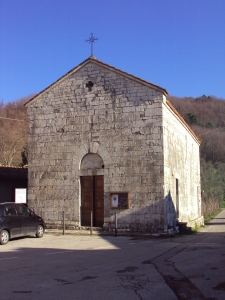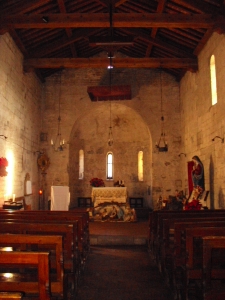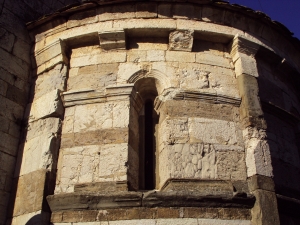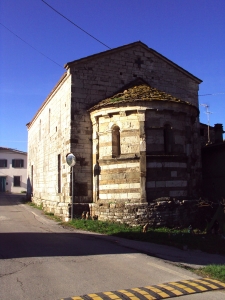
Information
Foundation:
XII secolo
District/Location:
Borgo a Mozzano, località Domazzano
District:
Mediavalle


The small church of San Donato is located on the outskirts of the town of Domazzano and shares its medieval origins with the nearby church of San Lorenzo, but is much better preserved than the "Romanic twin" (as the two little churches are called).
San Donato, Domazzano, Borgo a Mozzano
Although the town of Domazzano is mentioned in the documents since the end of the 10th century, the church of San Donato was built in its present form - which preserves without substantial modifications of the following centuries - in the 12th century: its first mention dates back to 1181 and is compatible with its architectural features. Moreover on the back of the original altar - a masonry cube brought to light under the modern stucco one during a restoration of the two-year period 1946-1947 that eliminated the eighteenth-century modifications inside the church - we read fragments of an inscription that reads "Thousandth hundredth [...] gesimo secundo", which, translated and appropriately integrated, can stand for any decade from 1122 to 1192. A single nave with a single semicircular apse marked by pilasters, it is built in white limestone with a masonry ashlar technique and without decorative elements. The apse is an exception, animated not only by the pilasters and by the three single-light windows that open onto it, but also by a two-colored vestment obtained by alternating the limestone with thick strips of sandstone and gray limestone. During the restoration of the interior of the Second World War, the original floor was also brought to light - and then re-covered - below the floor that was built in 1725, as well as stone seats along the perimeter walls. The walls were also teared down and a small wall that had been erected behind the altar to place a painting of the Madonna and that obstructed the access to the apse was knocked down. The roof of the church, renovated on that occasion, has wooden trusses. The bell tower is from the post-medieval era and is located in an isolated position with respect to the church, from which even the street separates it today.
Scopri altre attrazioni vicino a Saint Donato
See allYou may also like..
See allFind more
0















